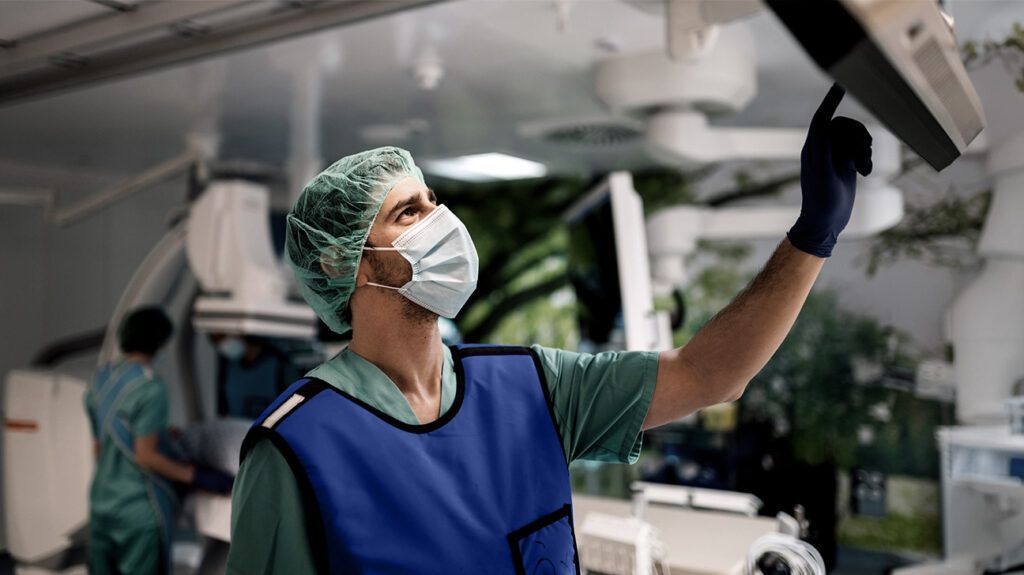A microlaryngoscopy is a procedure to examine and treat conditions of the voice box, or larynx. During this procedure, a doctor can remove lesions from vocal folds or correct movement disorders of the larynx.
The vocal cords, also known as vocal folds, are two bands of muscle within the voice box, or larynx. These muscle bands vibrate, which allows a person to produce sound.
If a person experiences issues with the vocal cords and voice box such as a hoarse voice, they may require a microlaryngoscopy to diagnose or treat any conditions.
A microlaryngoscopy is a surgical procedure that enables a surgeon to examine the larynx and vocal cords using a microscope.

A microlaryngoscopy is a surgical procedure that a surgeon can use to diagnose or treat issues with the vocal cords and voice box.
The procedure takes place under general anesthetic, which means a person will be asleep. It involves a microscope that allows a surgeon to examine the voice box in fine detail.
A microlaryngoscopy can help a surgeon diagnose and treat conditions of the vocal cords and voice box. If a person experiences issues such as a hoarse voice, a surgeon may perform a microlaryngoscopy to examine the area in detail and perform any necessary treatment.
Evidence suggests a person may require a microlaryngoscopy if they experience issues with the vocal cords and voice box. These can include:
- a hoarse voice
- polyps, which are small growths within the vocal cords
- nodules, which are small, firm lumps on the vocal cords
- laryngeal cancer
- abnormalities within the voice box
A microlaryngoscopy takes place when a person is under general anesthetic. This means they will be asleep during the procedure.
There are several ways a person can prepare for a microlaryngoscopy and general anesthetic, including:
- avoiding substances that can irritate the vocal cords and voice box, such as smoking, caffeine, and alcohol
- taking any reflux medication a healthcare professional prescribes
- preparing for the possibility of not being able to speak for 1 to 2 days following the procedure, such as bringing a note pad and pen
- arranging time off from work to recover, which may range from a few days to approximately 2 weeks
- avoiding any food or drink before the procedure, following the advice from the surgeon
- taking only medication the surgeon recommends or deems to be safe before the procedure
A microlaryngoscopy is a minimally invasive procedure that should take approximately 30 minutes.
It will begin by administering a general anesthetic. Once a person is asleep, the surgeon will insert a laryngoscope into the mouth and down into the voice box. A
During the examination, the surgeon may take photographic images, tissue samples, or use surgical instruments to remove any abnormalities such as polyps and nodules.
Following a microlaryngoscopy, the person will wake up in the recovery room and typically stay in the hospital until they feel well enough to go home. This is typically later the same day.
It is common for a person to experience a sore throat for 1 to 2 days following a microlaryngoscopy due to the laryngoscope entering the throat. A healthcare professional can prescribe pain relievers if a person requires them.
A person may also experience a stiff neck and a temporary worsening of voice hoarseness following a microlaryngoscopy, particularly if a surgeon has taken tissue samples. The individual may need to rest their voice and drink plenty of water for several days following the procedure.
People can eat and drink as usual as soon as they feel ready following a microlaryngoscopy.
A
During a microlaryngoscopy, a surgeon can also treat issues with the vocal cords and voice box such as hoarseness, the removal of polyps, and nodules.
Although a microlaryngoscopy is a minimally invasive procedure, there are several risks. These can
- damaging teeth, lips, or gums with the laryngoscope
- worsening of voice hoarseness
- temporary sore throat
- tongue pain
- numbing of the tongue
- dysgeusia — a foul, salty, metallic taste in the mouth
- pins and needles
- injury to the vocal cords
- difficulty swallowing
- dislocation of the jaw
- swelling in the airways
- blood clots from the general anesthetic
A microlaryngoscopy is a minimally invasive surgical procedure that allows a surgeon to diagnose and treat issues with the vocal folds and voice box.
The procedure involves inserting a thin telescope into the mouth and down into the voice box. A surgeon can take photographic images and tissue samples for further testing if necessary. A surgeon can also perform treatment such as removing polyps, nodules, and treating voice hoarseness.
A microlaryngoscopy is a short procedure, typically lasting approximately 30 minutes. Although it is a generally safe procedure, there are a few minor risks. These can include damage to the teeth, lips, and gums, worsening of voice hoarseness, difficulty swallowing, and a sore throat.
